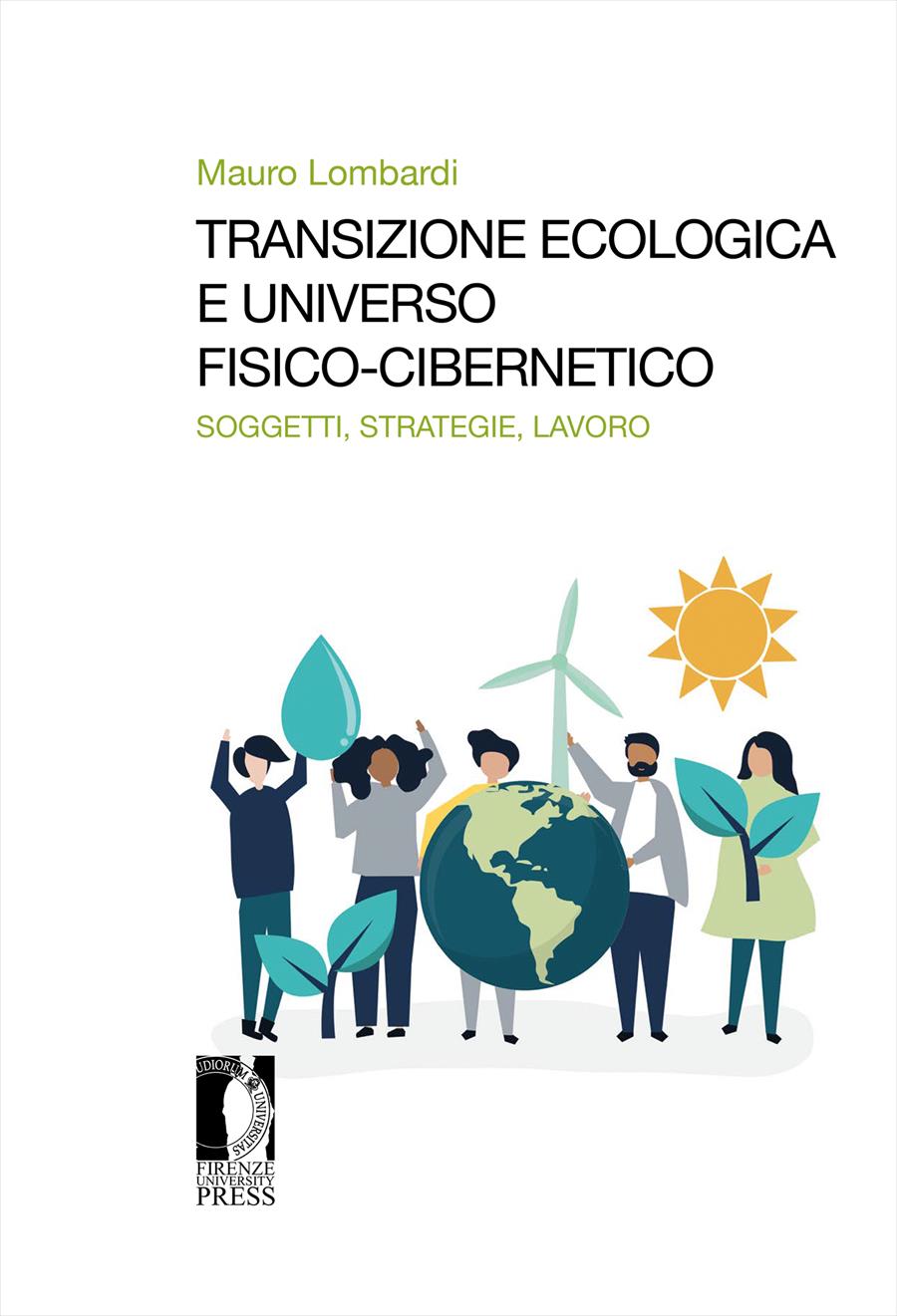- Transizione ecologica e universo fisico-cibernetico
- Mauro Lombardi
Attori e strumenti delle politiche per l’innovazione
- Mauro Lombardi
- © 2021 Author(s) |
- CC BY 4.0
- DOI: 10.36253/978-88-5518-310-9.09
After explaining a large set of new concepts and proposing a new theoretical frame, we first depict same stereotypical behavioral and strategic propensities emerging in human systems according an important managerial literature. Then we highlight the systemic models emerging from the strategies implemented by some Italian Regions in managing innovation dynamics. The arrival of the analysis is the identification of more effective tools for founding innovation policies.
- Keywords:
- Behavioral and strategic propensities,
- Innovation policies in Italy,
- how to evaluate them,
University of Florence, Italy - ORCID: 0000-0002-3234-7039
- Ackoff, R.L., e F.E. Emery. 1972. On Purposeful Systems. Chicago: Aldine-Atherton.
- Banca d’Italia. 2020a. “L’economia della Lombardia.” <https://www.bancaditalia.it/pubblicazioni/economie-regionali/2020/2020-0003/index.html (2021-10-03).
- Banca d’Italia. 2020b. “L’Economia della Toscana.” <https://www.bancaditalia.it/pubblicazioni/economie-regionali/2020/2020-0009/index.html?com.dotmarketing.htmlpage.language=102> (2021-10-03).
- Barzotto, M., Corò, G., e M. Volpe. 2016. “Territorial capital as a company intangible.” Journal of Intellectual Capital 17 (1): 148-67.
- Barzotto, M., Corradini, C., Fai, F.M., Labory, S., e P.R. Tomlinson. 2019. “Enhancing innovative capabilities in lagging regions: a n extra-regional collaborative approach to RIS3.” Cambridge Journal of Regions, Economy and Society 12: 213-32.
- Barzotto, M., Corradini, C., Fai, F.M., Labory, S., e P.R. Tomlinson. 2020. “Smart specialisation, Industry 4.0 and lagging regions: some directions for policy.” Regional Studies, Regional Science 7 (1): 318-32.
- Becattini, G. 2004. Per un capitalismo dal volto umano. Critica dell’economia apolitica. Torino: Bollati Boringhieri.
- Becattini, G. 2015. La coscienza dei luoghi. Il territorio come soggetto corale. Roma: Donzelli.
- Becattini, G., Bellandi, M., e L. De Propris. 2011. A Handbook of Industrial Districts. Cheltenham: Elgar.
- Bianchi, P., e A. Bianchi. 2019. Keeping Emilia-Romagna strong: an integrated industrial policy approach. Regionalpolitik Beispielregionen, ZBW – Leibniz-Informationszentrum Wirtschaft.
- Bianchi, P., e S. Labory. 2019a. “Regional industrial policy for the manufacturing revolution: enabling conditions for complex transformations.” Cambridge Journal of Regions, Economy and Society 12: 233-49.
- Bianchi, P., e S. Labory. 2019b. “Manufacturing regimes and transitional paths: Lessons for industrial policy.” Structural Change and Economic Dynamics 48: 24-31.
- Castellani, D., Rullani, E., e A. Zanfei. 2017. “Districts, multinationals and global/digital networks.” Economia e Politica Industriale 44: 429-47.
- EC-RIS 2019. “European Commission-Regional Innovation Scoreboard.” <https://ec.europa.eu/growth/sites/default/files/ris2019.pdf> (2021-10-03).
- Enos, J. 1995. In Pursuit of Science and Technology in Sub-Saharan Africa. UNU/INTECH Studies in New Technology and Development. London: Routledge.
- EURITO. 2018. “D.1. Literature review report: The role of data in the R&I policy cycle.” <https://ec.europa.eu/research/participants/documents/downloadPublic?documentIds=080166e5b9a23e3c&appId=PPGMS> (2021-10-03).
- Feller, I. 2013. “Performance measures as forms of evidence for science and technology policy decisions.” Journal of Technology Transfer 38: 565-76.
- Foray, D. 2018. “Smart specialization strategies as a case of mission-oriented policy – a case study on the emergence of new policy practices.” Industrial and Corporate Change 27 (5): 817-32.
- Galbraith, J.K. 1968. Il Nuovo Stato Industriale. Torino: Einaudi.
- Gharajedaghi, J. 2011. Systems Thinking: Managing Chaos and Complexity. Amsterdam: Elsevier.
- Grupp, H., e M.E. Mogee. 2004. “Indicators for national science and technology policy how robust are composite indicators.” Research Policy 33: 1373-84.
- Kleinknecht, A., van Montfrot, K., e E. Brouwer. 2012. “The Non Trivial Choice between Innovation Indicators.” Economics of Innovation and New Technology 11 (2): 109-21.
- Iizuka, M., e H. Hollanders. 2016. Innovation indicators: Towards a User’s guide. 21st International Conference on Science and Technology Indicators (STI), Valencia, Spain, September 14-16: 127-37.
- Iizuka, M., e H. Hollanders. 2017. “The need to customize innovation indicators in developing countries.” UNU-MERIT Working Papers #2017-032.
- Ires-Piemonte. 2019. “La Strategia di specializzazione intelligente del Piemonte: elementi di monitoraggio e valutazione al 2018.” <https://www.regione.piemonte.it/web/sites/default/files/media/documenti/2019-05/Monit_S3_10%2005_pub%20def.pdf> (2021-03-10
- Ires-Piemonte. 2020. “Relazione Annuale. Piemonte Economico-sociale.” <https://www.ires.piemonte.it/index.php/relazione> (2021-10-03).
- Litan, R.E., Wyckoff, A.W., e K.H. Fealing. 2014. Capturing Change in Science, Technology and Innovation: Improving Indicators to Inform Policy. Washington D.C.:The National Academies Press.
- Morgan, K. 2018. “Experimental governanceand territorial development.” Background paper for an OECD/EC Workshop on 14 December 2018 within the workshop series “Broadening innovation policy: New insights for regions and cities”, Paris.
- Plechero, M., e E. Rullani. 2019. “Beyond Local: The Role of National Innovation Networks Within the 4th IR.” SYMPHONYA Emerging Issues in Management 2, UNICUSANO.
- Regione Toscana. 2019. L’impatto di Industria 4.0 nelle piccole e medie imprese toscane: primi risultati di ricerca, a cura di E. Casprini, L. Zanni. Towel Publishing Pisa.
- Santamaria, L. 2009. “Beyond formal R&D: Taking advantage of other sources of innovation in low- and medium-technology industries” Research Policy 38: 507-51.
- Simeth, M., e M. Cincera. 2016. “Corporate Science, Innovation, and Firm Value.” Management Science 62 (7): 1970-81.
Chapter Information
Chapter Title
Attori e strumenti delle politiche per l’innovazione
Authors
Mauro Lombardi
Language
Italian
DOI
10.36253/978-88-5518-310-9.09
Peer Reviewed
Publication Year
2021
Copyright Information
© 2021 Author(s)
Content License
Metadata License
Bibliographic Information
Book Title
Transizione ecologica e universo fisico-cibernetico
Book Subtitle
Soggetti, strategie, lavoro
Authors
Mauro Lombardi
Peer Reviewed
Number of Pages
176
Publication Year
2021
Copyright Information
© 2021 Author(s)
Content License
Metadata License
Publisher Name
Firenze University Press
DOI
10.36253/978-88-5518-310-9
ISBN Print
978-88-5518-309-3
eISBN (pdf)
978-88-5518-310-9
Series Title
Studi e saggi
Series ISSN
2704-6478
Series E-ISSN
2704-5919
